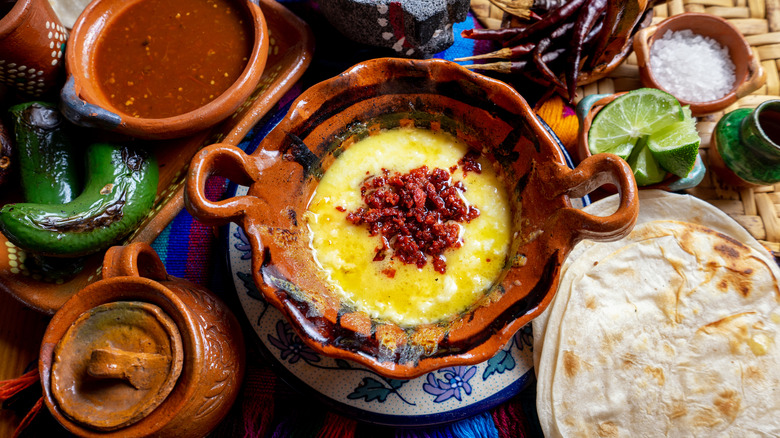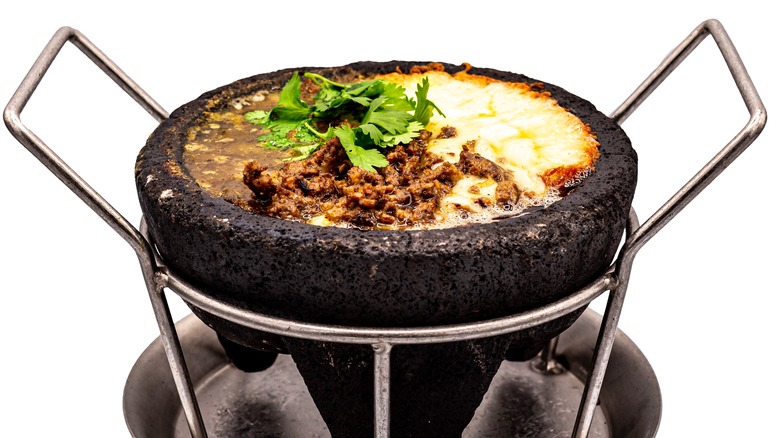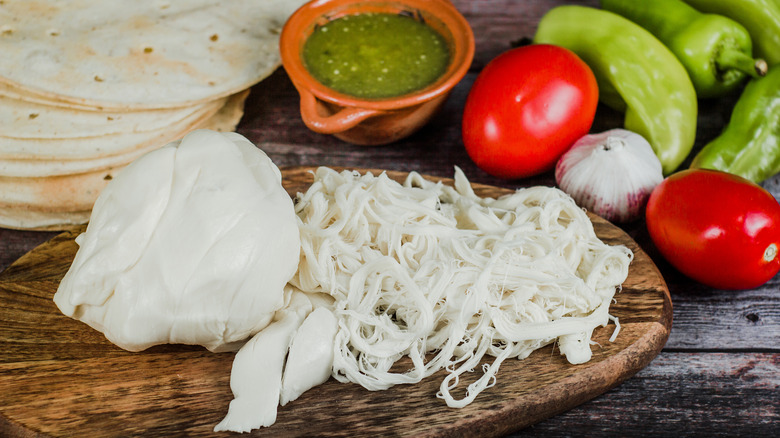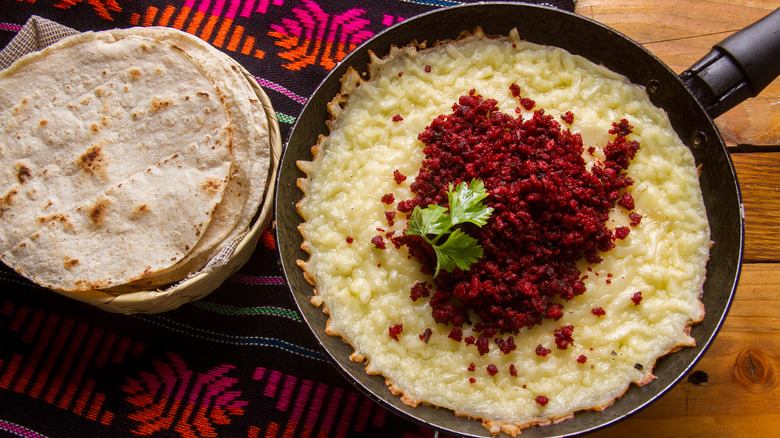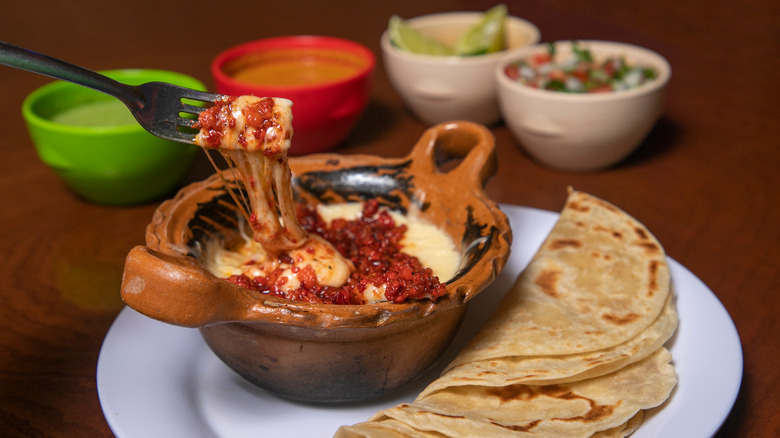What Sets Queso Fundido Apart From Other Varieties?
Melted cheese is a dependably delicious food to get spirits up. Whether in the form of a topping for your favorite nacho platter or as a single bowl of queso dip, there's a reason it's favored for a festive setting. In Mexico, a popular way to enjoy cheese during celebrations is queso fundido.
Served in a sizzling hot pan or sometimes even set on fire, queso fundido comes out viscerally appealing. And filled with various additions like chorizo, chile, and veggies, its flavor is complex, too. Plus, every region in Mexico has its own spin, so no two queso fundidos will be quite the same.
Rather than being eaten as a dip, it's spread onto fresh tortillas with a fork. And like its similarly cheesy counterpart, it can also make for a meal of its own or serve as an appetizer. What makes this tasty, gooey dish so incredibly unique to your typical queso?
History of queso fundido
While the exact origins are unknown, queso fundido is associated with Mexican ranching culture. It likely started as a campfire meal, hence the cast-iron serving. While popular all around Mexico, it has a stronger affiliation with Northern regions and is also a common menu item in the border region of the U.S. Some even consider it the inspiration for the beloved Tex-Mex queso. Stateside, this dish was only first found in print in 1978, and today it is a regional favorite in El Paso and New Mexico.
In Mexico, there's a plethora of variations with distinct ingredients and names. In Chihuahua, where it's particularly popular, it's called chili con queso. Meanwhile, in Nuevo Leon, which some consider a place of origin, it's sometimes lit on fire and called queso flameado. And versions in Oaxaca utilize a completely different quesillo and queso fresco base, but the dish is still called queso fundido.
Ingredients in queso fundido
Variation is the key aspect of queso fundido — just about every recipe will feature its own medley of ingredients. When it comes to cheeses, a large assortment can function as the base and bring in various flavors and textures. Stateside, monterey jack and cheddar are popular options. In Northern Mexico, it's an asadero, Mennonite, Manchego, or Chihuahua cheese base. And in Oaxaca, it's made with quesillo and queso fresco.
As far as condiments go, chiles are a popular addition, with poblanos as the most common type. Many also add chorizo, both as a meat filler and a flavoring. In Jalisco, the dish is traditionally made with oregano. Other additions include epazote, beans, spices like cumin and coriander, lime juice, and even tequila.
Further queso fundido deviations experiment with the consistency of queso fundido. Some chefs add beer, flour, and tomatoes, creating a runnier texture more akin to the American dip. Other creatives in the kitchen throw in pasta, turning queso fundido into a one-pot meal.
How queso fundido is made
The dish is interlinked with its cooking vessel since it needs an excellent insulator to keep the cheese melted and hot. Most versions utilize small cast iron or ceramic bowls, which are then carried to the table for serving. However, a large cast iron pan will also make do for the dish, it will just need to be split amongst diners.
Preparation starts with the creation of a simple salsa, combining tomatoes, oregano, chilies, and other flavorings. Some salsas are created traditionally in a mortar and pestle, while others are blended. Next, the chorizo is pan-fried, along with vegetable additions such as mushrooms and onions. Meanwhile, the cheeses should be shredded in uniform size before adding them to the heat. Once the cheese is added to the pan and mixed in, the mixture is broiled or baked. After it has melted, you can stir in the salsa and sprinkle cilantro on top.
The result is quite different than the queso popular in the U.S. Queso fundido is more flavorful, with more aromatic components in the mix. The consistency is gooier and thicker and substantially less runny than queso. And to top it off, it's eaten with fresh tortillas instead of tortilla chips since they may not hold up against queso fundido's hefty texture.
How queso fundido is served
Once queso fundido hits the table, it's dependably accompanied by some fresh flour tortillas. It's usually eaten like a do-it-yourself taco — dollops of cheese are forked into a fresh tortilla with whatever additions you want. The salsa concocted for the dish is often served in a container for exactly this purpose. Other toppings include extra chorizo from the cooking process or a fresh pico de gallo to craft the perfect bite.
As a popular dish for parties, it often comes served in an ornamental pan or bowl. And for added spectacle, ½ an ounce of a strong liquor can be poured on the top and then lit on fire, generating a version known as queso flameado. If you're feeling unsure, no need for the spectacle. However it rolls around, diners will be happy to dive in since there's nothing quite as scrumptious as gooey, flavorful cheese.
